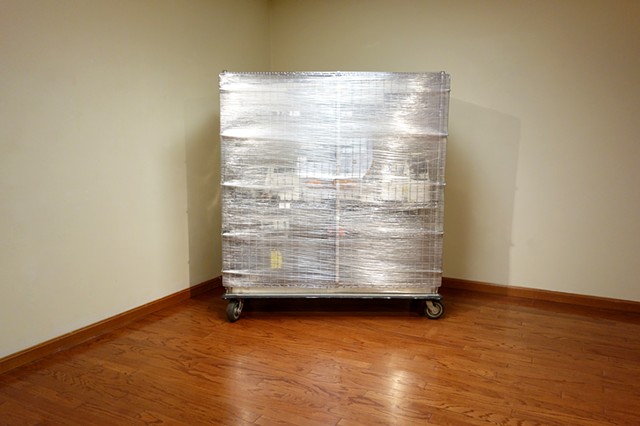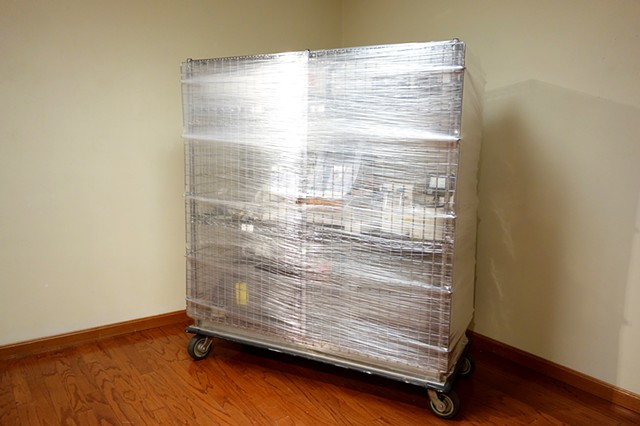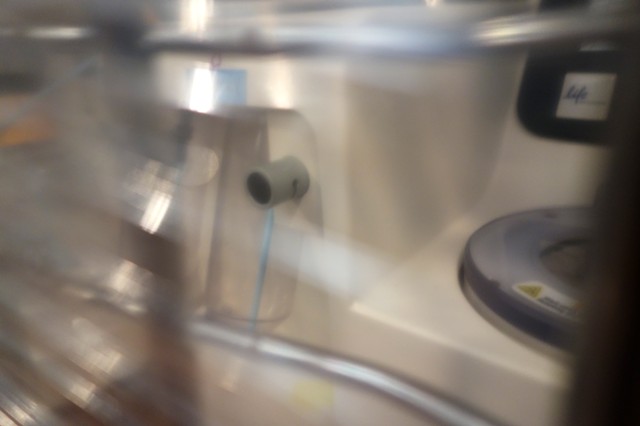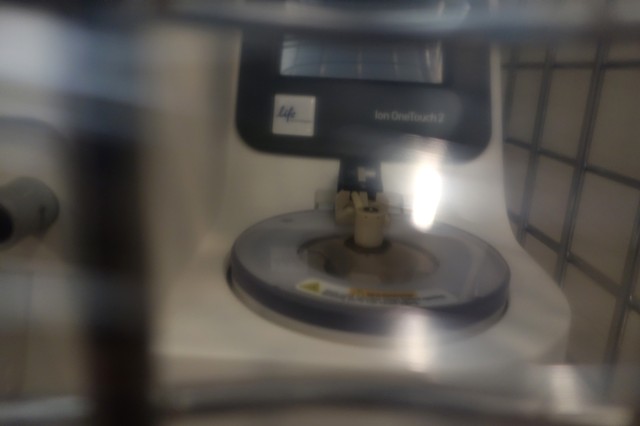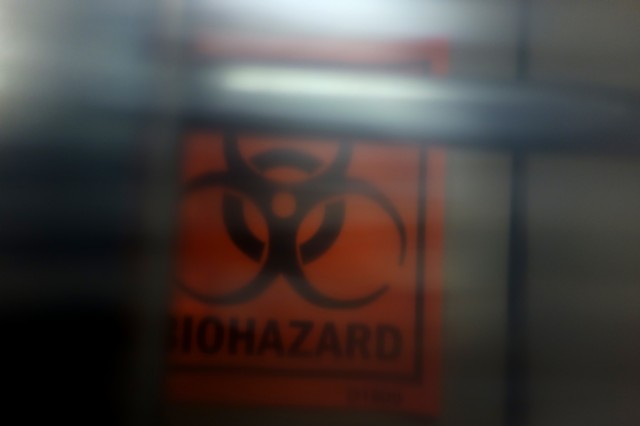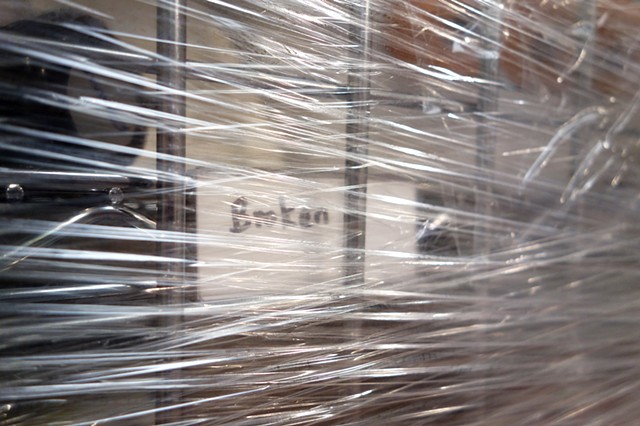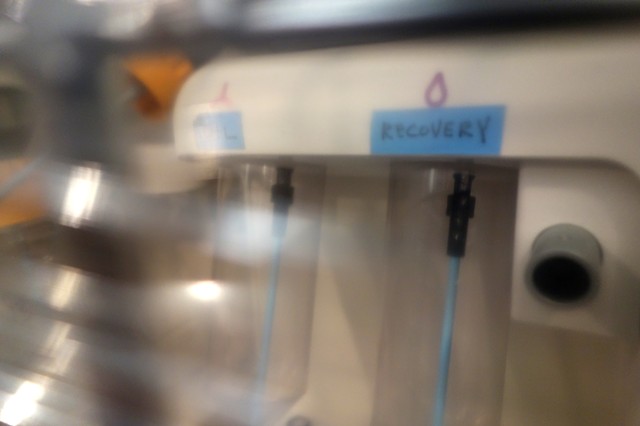Museum
Museum
2017
Shrink wrap and stainless-steel cage containing various decontaminated lab equipment.
62”x 70”x 24”
Collaboration with the Broad Institute of MIT and Harvard.
My studio space at the Broad Institute was on the floor that was used as storage space. It was a huge loft space, yet to be converted to lab or office spaces. The floor to ceiling windows looked out to the directions of the Charles River. As far as the real estate values go, this spot was the most expensive studio space I’ve ever occupied.
I was given a small corner surrounded by unused lab equipment, office furniture, new biohazard trash boxes, mice cages (without mice), and so on. Some of the lab equipment were wrapped in shrink wrap. What I could see inside over the sheeting didn’t provide me much information. They remained mysterious, and I worked side by side with these quiet equipment.
I spent many hours in the evenings and weekends at the Broad Institute during my residency. Those days in the quiet off-hours, I often walked through the labs, noticing the humming sounds of equipment. They were breathing, working non-stop, evoking a strange symbiosis with scientists who also seemed to be working non-stop. The equipment by my studio space was not humming, but cocooned in plastic sheeting and just sat there. Out of commission. Cycled out of labs. Maybe they’ve been replaced by newer models. I wondered about their future, and wondered about the lifespan of the lab equipment these days. I visited the storage space for the Cancer Program in the summer of 2016 to learn that some equipment only last a few years or so before they get replaced by the latest technology.
One year later, I decided to include the decontaminated lab equipment for my exhibit, “Lost and Found” at the Boston Arts Academy.
Museum exists as preserving cultural and historical artifacts and presenting them to the public. This cage functions as a storage for scientific equipment and also as an object. Wrapped in shrink wrap, though they’re not new, this storage-come-object speaks of our contemporary past, time that is moving too quickly, and the latest technology becoming historical too soon.
* * * * * * * * * * * * * * * * * * * * * * *
I would like to thank the Cancer Program at the Broad Institute for the loan of these equipment. This piece was made possible by the generous assistance from Jason Bernett, lab manager for the Cancer Program, Scott Bain, Supervisor for the Broad Truck, Angel Rivera and John (Spike) Kitowicz, Broad Truck drivers, and special thanks to the Facilities at the Broad Institute for creating a wonderful studio space during my residency. I’m especially grateful for the Broad’s Artist in Residence Program for the opportunity.
Shrink wrap was removed from the cage after the exhibit, and all the equipment were safely returned to the Broad Institute.
Naoe Suzuki
November 15, 2017
